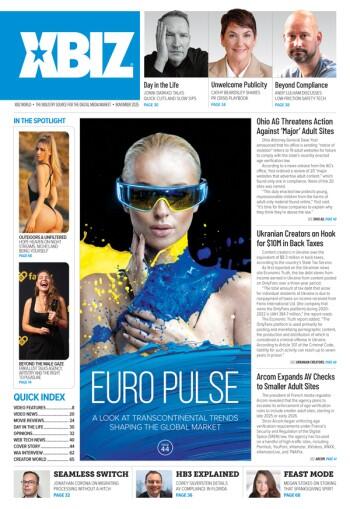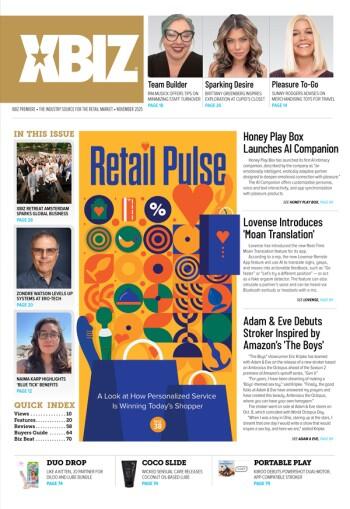For traffic-savvy adult website operators and marketers, buying ad space and premium placement on select sites is a proven method for attracting audiences. This has traditionally involved studying a site’s existing traffic profile to determine the most productive and profitable sources and then attempting to increase that traffic via site-specific ad buys. For example, a paysite or affiliate that promotes free galleries may see superior conversions from a given gallery post, and then decide to pay for premium placement rather than rely on a lower placement among countless free listings. Other times, putting your ad on a competitor’s site, or on a site in a related niche, is a great way to gain market share.
This largely manual and time-consuming process, while allowing precise targeting, can often depend on developing personal relationships with other site owners, and may rely on less than accurate statistics. Thus, it has receded with the rise of online advertising networks and brokers that manage ad placements across numerous publishers — with pros and cons to both approaches.
With programmatic bidding, you are constantly fighting with other buyers for the same spot and it can grow tiresome for many buyers. It also gives the bad guys the power to do very bad things very quickly, [such as] malware, tech support scams and more. -Juicy Jay, JuicyAds
One benefit of manual placements is that they target individual publishers and sites that may not be part of an advertising network — again underscoring the value of developing interpersonal relationships when media buying.
Programmatic purchases, on the other hand, automate ad buying by apply artificial intelligence (AI) to the decision-making process; analyzing the performance metrics of individual campaigns and comparing that data to network-wide results to help optimize revenues.
“Programmatic media buying is not just about automating purchases but about making smarter decisions and communicating to the customers through data-driven marketing,” Adamo CEO Judy Shalom told XBIZ. “Instead of narrowing down targeted groups, opening Big Data and technology will give the ability to widen audiences and the possibility of customizing ads based on the audience and its behavior.
“Programmatic takes advertising to a whole new level,” Shalom added. “When advertising is relevant to the consumer, that’s also when it becomes effective, and that’s exactly what data-driven marketing, programmatic and 2017 is all about.”
Real-time bidding (RTB) is a popular form of programmatic ad buying, where the actual advertisements appearing on a web page are determined within milliseconds at load time, based on the visitor’s unique demographics and that visitor’s value to a specific advertiser.
With RTB, successful ad placements depend upon winning an on-the-spot auction, where an advertiser specifies a maximum bid amount, i.e. $1 for 1,000 ad impressions. If a competitor bids $0.99, you win and your ad is displayed, but if he bids $1.01, his ad appears instead of yours. Of course, only you will know the actual value of a unique visitor from a certain location, on a certain device, at a specific time of day, etc., based on your own testing, and thus able to set a profitable maximum bid amount.
According to ExoClick’s head of programmatic, Alexandre Cahagne, one upside to programmatic for advertisers is that it makes it possible to buy individual, targeted impressions in real-time via RTB.
“[This eliminates] wasted impressions and lowers your costs compared to the traditional model of buying bulk impressions by CPM in the hopes that some will convert, and enables buyers to maximize their ROI while better defining their buying strategy,” Cahagne told XBIZ. “For publishers, programmatic selling enables them to plug into various ad networks and ad exchanges, widening their market reach.”
Cahagne posits that by plugging into an ad network’s RTB engine, publishers can maximize the value of their ad zones.
“They are selling a single impression to the highest bidder,” Cahagne said, “allowing them to increase their demand rate as well as pushing unsold inventory and filling a lack of demand in some specific GEOs. The main [drawback] is the technical integration and the server costs it can have for the advertisers, but it is definitely worth it!”
Jay from JuicyAds said that programmatic ad buying is complicated when it comes to pros and cons.
“One of the pros is that it allows more advertisers to bid for more space,” Jay told XBIZ. “However, it dramatically reduces the stability for individual advertisers.”
Jay says that JuicyAds allows clients to lock down any ad space they want, via its Direct Ad Marketplace, in a way that other networks cannot replicate.
“With programmatic bidding, you are constantly fighting with other buyers for the same spot and it can grow tiresome for many buyers. It also gives the bad guys the power to do very bad things very quickly, [such as] malware, tech support scams and more,” Jay explained. “With the power to quickly bid and place ads, comes the ability to exploit that and avoid detection.”
TrafficForce’s Ross Allan told XBIZ that programmatic ad buying frees up a lot of time in identifying media that an advertiser wishes to purchase.
“You save human resources and get the most cost-efficient price for your ad all in one spot vs. negotiating the ad unit price on an individual level and hoping that the ad space has enough of the targeting that you are seeking for your product,” Allan elucidated. “There is more time to be spent creating good marketing materials as well since you can have the traffic go live when you are happy with your campaign. This gives better media and larger amounts of creatives for testing to find the winning flow from creative to lander to end product.
“Traditional ad buying is great if you are a larger marketer with vast funds to secure long-term deals with direct publishers and already know that the ad space works with your funnel,” Allan continued, “but not everyone has the luxury of being in this position, so programmatic ad buying helps anyone get into the market at a very low cost of entry.”
Allan noted one drawback for the industry is the lack of marketable products with a worldwide reach.
“Mainstream programmatic buying is mostly done for high awareness campaigns of global brands,” Allan added, “with budgets that the adult industry simply doesn’t have and cannot duplicate because of the need for instant ROI.”
Other programmatic ad types enable an advertiser to acquire a specific number of ad impressions from specific publishers in a given network, automating more traditional, manual ad placement approaches.
According to the Interactive Advertising Bureau (IAB), the international body that specifies ad standards, programmatic ad buying involves more than RTB, with four standard transaction types — including open auctions, invitation-only/private auctions, unreserved fixed rate/preferred deals and automated guaranteed/programmatic guaranteed deals.
Marketers have been quick to adopt programmatic ad buys, with AdRoll noting that a majority of survey respondents (61 percent) report that programmatic ads provide a greater return on investment than do traditional ad buys. The survey also shows social media (66 percent) and display ads (51 percent) are the popular programmatics, with nearly half of respondents raising their ad budgets this year. Other stats point to 40 percent of placements targeting mobile ads (a number that is rising as the majority of marketers report increasing investment in mobile inventory), while 29 percent auto-target video ads.
Programmatic ad buys and user behavioral tracking and retargeting systems tend to rely on cookies and other techniques that are not as mobile-friendly as one might hope, and have a checkered reputation in some circles, but the analytics capabilities of AI systems are able to quickly evaluate countless factors to deliver the best results. Whether used exclusively or in conjunction with the more traditional display and manual ad placements, programmatic ad buys should be part of every modern marketer’s toolbox.
Cahagne said that ExoClick currently allows demand-side RTB that gives advertisers access to 5.5 billion daily impressions consisting of high-quality direct traffic sources from its global network of publishers.
“Our publishers are automatically integrated into ExoClick’s RTB feature so they can take full advantage of increased revenues and new traffic sources that our RTB engine brings via auctioning their individual impressions,” Cahagne explained. “In fact, our RTB technology allows advertisers to go fully programmatic by integrating their own automation software that they can further enhance with our automation tools, including server-to-server tracking, landing page optimization algorithms and platform API to automate features such as setting custom bidding limits, targeting different devices and mobile carriers, creating custom dashboards for more in-depth metrics and monitoring performance in different geos [while] programmatically changing them to improve ROI.”
While a recent IAB report noted that challenges exist for programmatic buys, ranging from transparency, fraud and trust; to internal organizational challenges for brands and publishers; it reveals that this form of advertising was expected to top $20B in 2016 — and while display ads remain dominant, mobile and video programmatic ads are rapidly growing — with both advertisers and publishers benefiting.
“Publishers can use programmatic to fund the creation of quality video content particularly by helping to monetize traffic spikes,” the IAB report noted. “Ultimately efficiency doesn’t have to mean lower CPMs; it can also mean more effective engagement.”
The IAB said that measurement matters even more in a programmatic world.
“Buyers should ensure they are reaching the right audience, use a consistent, comparable metric to plan, buy and sell audiences, use brand data to ensure advertising resonates and ultimately ensure that the campaign drives the desired action,” the IAB report revealed, adding that attribution is essential to effective programmatic spend. “Last touch attribution is outdated and is like giving all the credit in a relay race to the last runner. Attribution models should incorporate the ‘first site visit,’ separating the funnel into prospecting and retargeting, and set the right incentives to each part.”
The IAB report also emphasized that creativity and programmatic are not enemies, noting that proper ad planning may double interaction rates while increasing engagement by 50 percent.
“Every ad should be dynamic and leverage the same audience signals used in programmatic media buying to make the creative relevant,” the IAB report concluded. “This can be done by infusing first or third-party data on demographics, location and previous website behavior to alter the headline call to action, image or assets of the ad unit to ensure the message resonates with the user.”
It sounds like a lot of work, but this effort separates the pack leaders from the also-rans and is guiding the future development of online advertising, publishing and visitor monetization.
Finally, ExoClick’s Cahagne said that programmatic is not something to be afraid of.
“The whole industry is moving that way with programmatic now dominating mobile, video and native ad buying,” Cahagne underscored. “At ExoClick, our RTB integration process is easy. We have a very smooth onboarding process [with] a set of guidelines and criteria along with a dedicated tech team who will help you to quickly insert into our network.”







